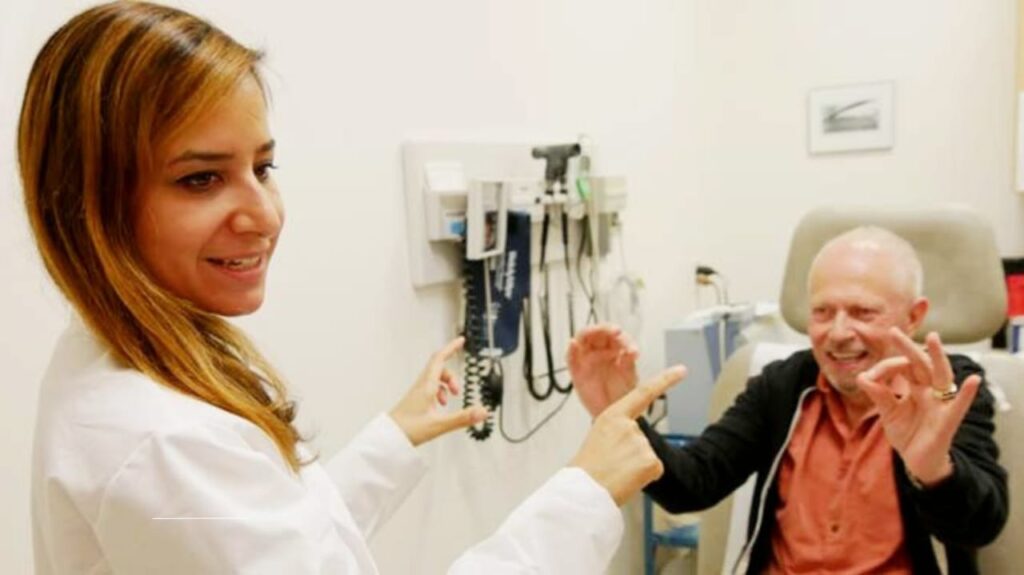
Parkinson’s Disease is a neurological condition that affects millions of people worldwide. Named after Dr. James Parkinson, who first described it in 1817, this progressive disorder primarily impacts movement but can also influence mood, cognition, and overall quality of life. While it’s often associated with tremors, Parkinson’s is far more complex than just shaking hands. In this article, we’ll dive deep into what Parkinson’s Disease is, its symptoms, causes, treatment options, and how individuals can manage life with this condition.
What is Parkinson’s Disease?
Parkinson’s Disease is a neurodegenerative disorder, meaning it involves the gradual loss of nerve cells in the brain. Specifically, it affects dopamine-producing neurons in a region called the substantia nigra. Dopamine is a neurotransmitter that plays a crucial role in coordinating movement. When these neurons die or become impaired, dopamine levels drop, leading to the hallmark symptoms of Parkinson’s.
While the exact cause of Parkinson’s remains unknown, researchers believe it results from a combination of genetic and environmental factors. It’s important to note that Parkinson’s is not contagious, nor is it strictly hereditary, although having a close relative with the condition may slightly increase your risk.
Symptoms of Parkinson’s Disease
Parkinson’s symptoms vary from person to person and often develop gradually. They can be broadly categorized into motor (movement-related) and non-motor symptoms.
Motor Symptoms
- Tremors: The most recognizable symptom, tremors usually begin in the hands or fingers and occur at rest. They often resemble a “pill-rolling” motion.
- Bradykinesia: This refers to slowness of movement. Simple tasks like buttoning a shirt or walking may become time-consuming and difficult.
- Muscle Rigidity: Stiffness in the limbs or trunk can cause discomfort and limit range of motion.
- Postural Instability: Impaired balance and coordination increase the risk of falls, especially in later stages of the disease.
Non-Motor Symptoms
- Cognitive Changes: Some individuals experience memory problems, difficulty concentrating, or even dementia in advanced stages.
- Mood Disorders: Depression and anxiety are common among people with Parkinson’s, often due to the emotional toll of the disease.
- Sleep Problems: Insomnia, restless legs syndrome, and vivid dreams can disrupt sleep patterns.
- Autonomic Dysfunction: This includes issues like constipation, low blood pressure, and excessive sweating.
Causes and Risk Factors
While the exact cause of Parkinson’s Disease remains elusive, several factors are believed to contribute to its development:
- Genetics: Mutations in specific genes, such as LRRK2 and SNCA, have been linked to Parkinson’s. However, these genetic cases are rare and account for only about 10% of all diagnoses.
- Environmental Factors: Exposure to certain toxins, such as pesticides and herbicides, has been associated with an increased risk of Parkinson’s. For example, studies have shown that farmers and rural populations are more likely to develop the condition.
- Age: Parkinson’s is more common in people over 60, although early-onset Parkinson’s can occur in individuals under 50.
- Gender: Men are 1.5 times more likely to develop Parkinson’s than women, though the reasons for this disparity are not fully understood.
Diagnosis and Challenges
Diagnosing Parkinson’s Disease can be challenging, as there is no definitive test for the condition. Instead, doctors rely on a combination of medical history, physical examinations, and sometimes imaging tests like MRI or DaTscan to rule out other conditions.
One of the biggest challenges in diagnosing Parkinson’s is its similarity to other movement disorders, such as essential tremor or multiple system atrophy. Misdiagnosis can delay appropriate treatment, highlighting the need for specialized care from neurologists or movement disorder specialists.
Treatment Options
While there is currently no cure for Parkinson’s Disease, several treatments can help manage symptoms and improve quality of life. These include:
Medications
- Levodopa: The most effective medication for Parkinson’s, Levodopa is converted into dopamine in the brain. It’s often combined with Carbidopa to reduce side effects like nausea.
- Dopamine Agonists: These drugs mimic dopamine’s effects in the brain and are often used in early-stage Parkinson’s.
- MAO-B Inhibitors: These medications help prevent the breakdown of dopamine in the brain.
Surgical Options
- Deep Brain Stimulation (DBS): This surgical procedure involves implanting electrodes in specific areas of the brain to regulate abnormal impulses. DBS can significantly reduce motor symptoms in some patients.
Lifestyle and Supportive Therapies
- Physical Therapy: Exercises to improve balance, flexibility, and strength can help maintain mobility.
- Speech Therapy: Speech therapists can assist with voice strengthening and swallowing difficulties.
- Occupational Therapy: This helps individuals adapt their daily activities to their changing abilities.
Living with Parkinson’s Disease
A Parkinson’s diagnosis can be life-altering, but many people continue to lead fulfilling lives with the right support and management strategies. Here are some tips for living well with Parkinson’s:
- Stay Active: Regular exercise, such as walking, yoga, or tai chi, can improve mobility and mood.
- Eat a Balanced Diet: A diet rich in fruits, vegetables, and whole grains can support overall health. Some studies suggest that the Mediterranean diet may be particularly beneficial.
- Build a Support Network: Connecting with others who have Parkinson’s can provide emotional support and practical advice. Organizations like the Parkinson’s Foundation offer resources and community events.
- Stay Informed: Keeping up with the latest research and treatment options can empower you to make informed decisions about your care.
Advances in Research
The field of Parkinson’s research is rapidly evolving, with scientists exploring new treatments and potential cures. Some promising areas of study include:
- Stem Cell Therapy: Researchers are investigating how stem cells can be used to replace damaged dopamine-producing neurons.
- Gene Therapy: This approach aims to correct genetic mutations associated with Parkinson’s.
- Neuroprotective Treatments: Scientists are working on drugs that can slow or halt the progression of the disease.
Clinical trials are also underway to test new medications and therapies, offering hope for future breakthroughs.
The Emotional Impact of Parkinson’s
Living with Parkinson’s Disease isn’t just about managing physical symptoms; it’s also about navigating the emotional challenges that come with a chronic condition. Many individuals experience feelings of frustration, isolation, or fear about the future. Seeking counseling or joining a support group can provide a safe space to share these emotions and learn coping strategies.
Caregivers, too, face significant challenges. Providing care for a loved one with Parkinson’s can be physically and emotionally demanding. Respite care, counseling, and caregiver support groups can help ease this burden.
The Role of Technology
Technology is playing an increasingly important role in managing Parkinson’s Disease. Wearable devices, for example, can track movement and provide real-time feedback to help individuals manage symptoms. Smartphone apps can remind patients to take their medications or perform exercises.
Telemedicine has also become a valuable tool, allowing patients to consult with specialists without the need for travel. This is particularly beneficial for those living in rural or underserved areas.
The Importance of Early Detection
Early detection of Parkinson’s Disease can make a significant difference in managing the condition. While there is no cure, starting treatment early can help slow symptom progression and improve quality of life. Researchers are working on developing biomarkers—measurable indicators of the disease—that could enable earlier diagnosis.
For example, studies have shown that changes in handwriting, voice, or even sense of smell may precede motor symptoms by several years. Identifying these early signs could lead to earlier intervention and better outcomes.
The Global Impact of Parkinson’s
Parkinson’s Disease is a global health issue, affecting an estimated 10 million people worldwide. As populations age, the prevalence of Parkinson’s is expected to rise, placing an increasing burden on healthcare systems.
In low- and middle-income countries, access to diagnosis and treatment can be limited, highlighting the need for greater awareness and resources. Global initiatives, such as World Parkinson’s Day, aim to raise awareness and advocate for better care and support for individuals with Parkinson’s.
The Future of Parkinson’s Care
The future of Parkinson’s care is bright, with ongoing research and technological advancements offering hope for better treatments and, ultimately, a cure. Collaborative efforts between researchers, healthcare providers, and patient advocacy groups are driving progress and improving the lives of those affected by this condition.
As we continue to learn more about Parkinson’s Disease, one thing is clear: a diagnosis is not the end of the road. With the right support, resources, and determination, individuals with Parkinson’s can continue to live meaningful and fulfilling lives.
